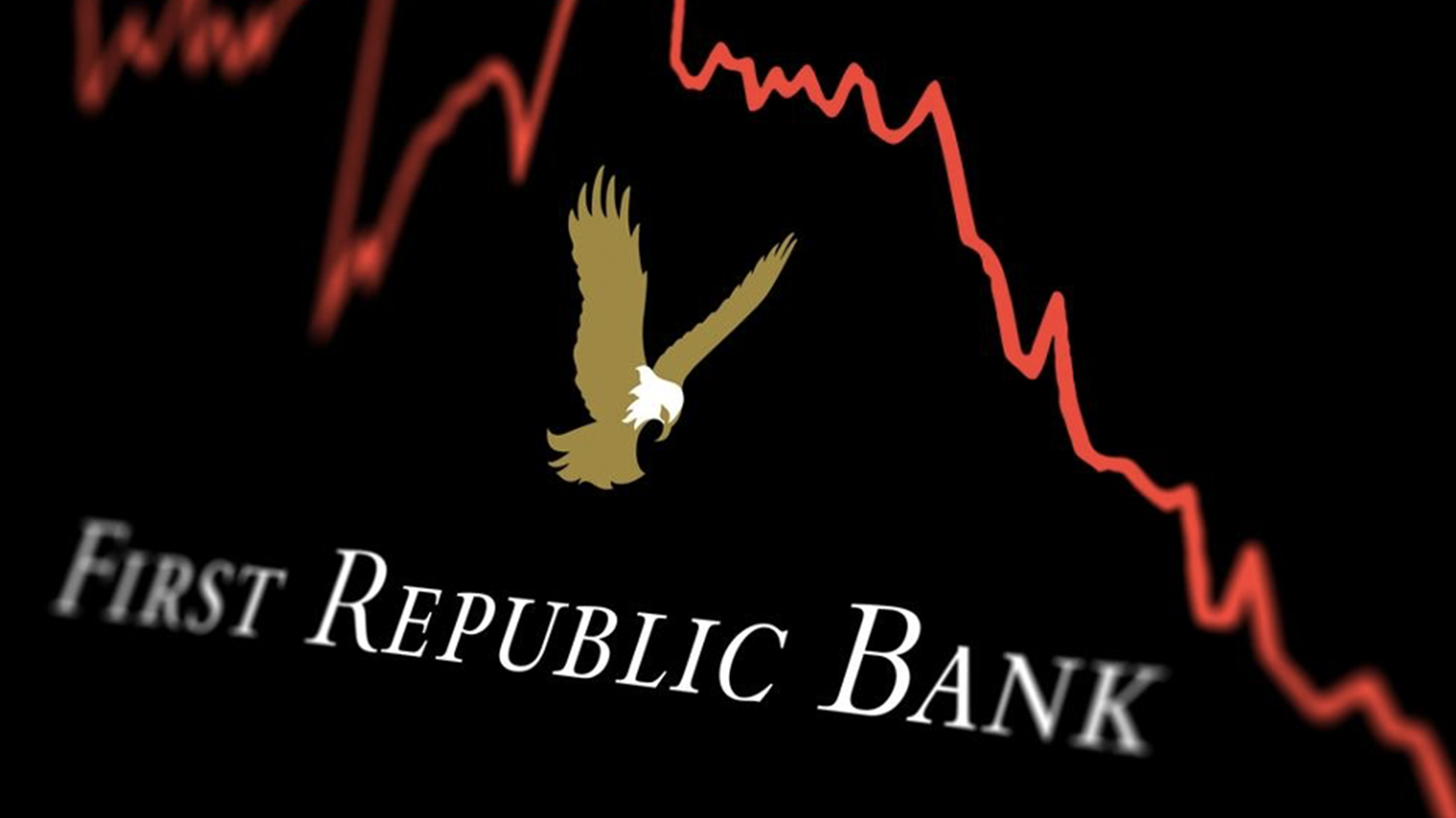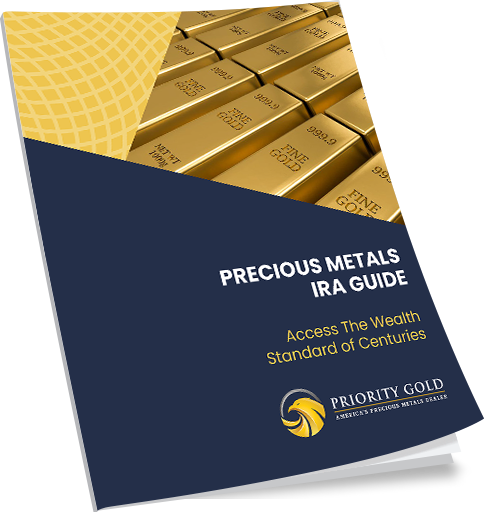The collapse of Republic First Bank on April 26, 2024, marked the first FDIC-insured bank failure of the year, stirring concerns about the stability of smaller regional banks amidst an uncertain economic climate. This event highlights the importance of understanding the dynamics between bank failures and gold investments, as history has often shown a rise in gold prices during times of financial distress.
Current Economic Conditions
The current economic conditions reflect a complex and challenging landscape for the banking sector, as outlined by various economic insights and forecasts for 2024. The banking industry faces pressures from a slowing global economy, with divergent economic trends that test their ability to manage costs and generate income. These conditions are compounded by higher interest rates, which, while temporarily beneficial in terms of net interest income, also increase the cost of funding and could squeeze margins, particularly for smaller regional banks that may not have the same financial cushions as their larger counterparts.
The heightened interest rates have been a double-edged sword. On one hand, they’ve increased the banks’ net interest income significantly; on the other hand, they have raised the costs associated with interest-bearing deposits, potentially leading to higher funding costs over time. This scenario is more pronounced for regional and midsize banks, where deposit costs have escalated more sharply compared to larger banks. Such dynamics underscore the vulnerabilities these banks face, particularly if economic conditions worsen or remain unstable.
The Impact of Commercial Real Estate on Bank Stability
Commercial real estate (CRE) debt poses a significant challenge to the stability of the banking sector in 2024. With approximately $950 billion in CRE debt coming due this year in the United States alone, the sector is under considerable pressure.
Disturbingly, a substantial portion of this debt is already behind on payments, with delinquency rates reaching 6.5% as reported by the Mortgage Bankers Association (MBA).
This debt burden is particularly pronounced in sectors like retail, where delinquency rates have surpassed 10% for retail mortgage-backed securities, indicating severe strain and potential risks for lenders.
For banks, especially smaller regional ones heavily invested in local markets and small business lending, CRE loans represent a significant part of their portfolios. The looming maturity of CRE debt, coupled with rising delinquency rates, threatens banks’ balance sheets by potentially devaluing assets and necessitating increased loan loss provisions.
The interconnectedness of the banking sector with CRE markets highlights the potential ripple effects of a downturn in valuations. Banks with higher concentrations of CRE loans face heightened vulnerabilities, especially if specific sectors, like retail, continue to struggle.
Amidst economic uncertainty, inflationary pressures, and evolving regulatory landscapes, banks must proactively manage their CRE exposures. This includes closely monitoring delinquency trends, stress-testing portfolios, and implementing robust risk management practices to withstand adverse scenarios and market shocks.
The impact of CRE debt on bank stability underscores the need for vigilant risk assessment and strategic planning within the banking sector to navigate the challenges posed by commercial real estate in 2024 and beyond.
Gold’s Surge in the 2008 Financial Crisis
During the 2008 financial crisis, gold prices showed significant resilience and growth, increasing from around $730 per ounce at the beginning of 2008 to over $1,100 by the end of 2009. This surge in gold prices was fueled by increased investor interest, driven by its reputation as a safe haven asset during times of economic uncertainty.

The U.S. Bureau of Labor Statistics reported a 12.8% surge in the Producer Price Index (PPI) for gold in 2009, reflecting heightened investor demand during financial turbulence. The Federal Reserve’s substantial quantitative easing measures, aimed at stabilizing the economy, further contributed to this rise by devaluing the dollar, which typically enhances the appeal of gold as an investment.
Gold’s Role as a Safe Haven in Banking Crises
Gold has a well-documented and multifaceted role during banking crises, serving as a safe haven asset due to its independence from the performances of global currencies or stock markets. This was notably demonstrated during the 2008 financial crisis when gold prices increased significantly as investors sought stability amidst the turmoil in the banking sector. The demand for gold rises during such periods as it provides a hedge against the devaluation of fiat currencies and the potential collapse of the banking system, thus preserving investor wealth. The World Gold Council highlights that gold’s performance during banking crises is influenced by its role as a hedge against systemic risks and currency devaluation, underpinning its reputation as a reliable store of value during economic downturns and banking sector instabilities.
Golden Surge: Predicted 6% Rise Signals Investment Boom
Gold continues to be an exemplary investment during periods of uncertainty and banking crises. Recent data and forecasts from leading financial analysts indicate a significant potential for gold prices to increase in response to current and upcoming economic pressures.
In the next 12 months, Goldman Sachs predicts gold prices to rise by approximately 6%, reaching up to $2,175 per ounce. This prediction is bolstered by various factors, including central bank purchases and sustained demand in emerging markets, which help maintain high gold prices even amid fluctuating market conditions.
Further, analysts from J.P. Morgan project that gold prices will potentially peak at $2,300 per ounce in 2025. This forecast is predicated on expectations of reduced interest rates by the Federal Reserve as inflation pressures ease. Such monetary easing typically results in lower real yields, enhancing gold’s attractiveness as an investment.
These forecasts underscore gold’s role as a safe haven, particularly in light of financial instability such as that caused by recent bank failures. As central banks continue to diversify their reserves and geopolitical tensions remain high, gold’s appeal is likely to grow, reinforcing its status as a reliable store of value amidst economic uncertainty.
For investors considering gold as part of their portfolios, these insights suggest that maintaining or increasing allocations to gold could be a prudent strategy to hedge against ongoing and future economic risks.
Conclusion
The downfall of Republic First Bank underscores the fragile nexus between banking health and gold markets. History reliably shows that during the banking crisis, gold became an essential asset for preserving wealth. This trend was evident as we witnessed how, amidst the recent banking disturbances, gold’s stability has shone through. As Fed Chair Powell aptly noted, challenges in sectors like commercial real estate are expected to persist, signaling ongoing vulnerabilities within the banking sector.
With the current economic landscape marked by no imminent recovery in commercial real estate and continuing high interest rates, the potential for further banking disruptions looms large.
Such an environment spells risk for unprotected assets, making the case for gold investments more compelling than ever. Integrating physical precious metals into your investment portfolio, particularly through mechanisms like a Precious Metals IRA, could provide a critical buffer against the spiraling cycle of banking instabilities. Now is the time to reinforce your financial defenses with gold—an enduring safeguard in tumultuous times.
For guidance on fortifying your investments with gold, contact us today.
U.S. Bureau of Labor Statistics Gold Prices Report
Delinquency Rates for Commercial Properties Rise to 6.5%
Gold is JPMorgan’s Top Pick in Commodities in 2024 with Prices Eyeing $2,500
Will Gold Prices Hit Another All-Time High in 2024? | JP Morgan
Gold Prices Are Forecast to Rise 6% in the Next 12 Months











